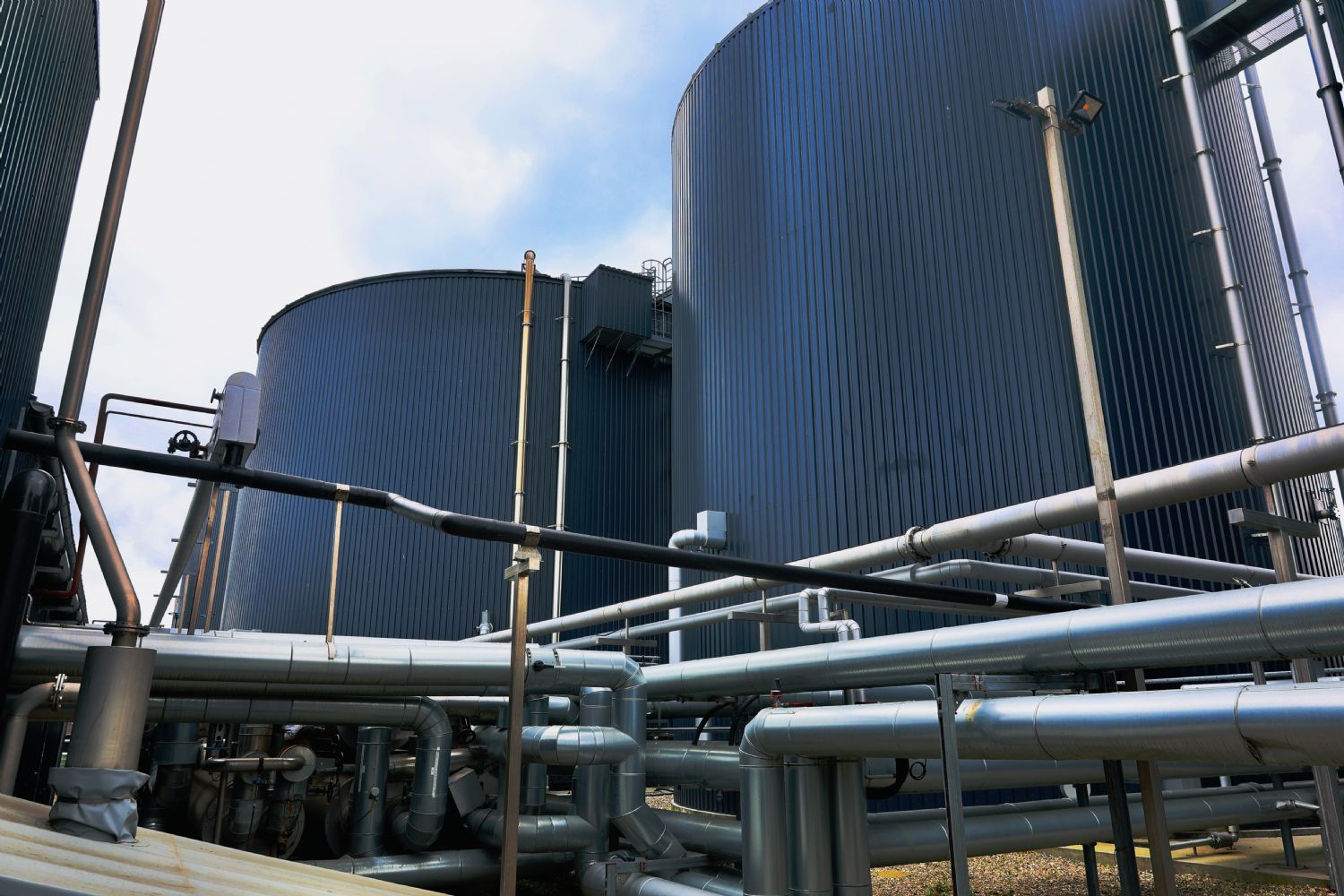Biogas plays a key role in the green transition by reducing CO₂ emissions and promoting a circular economy. With GoO certificates, companies can document the use of renewable energy, improve their ESG profile, and actively contribute to a sustainable future.
Companies' ESG strategies focus on integrating sustainability and responsibility into their core business. With biogas and GoO certificates, energy consumption can be documented as green, which reduces the CO₂ footprint and strengthens the ESG profile towards investors and stakeholders.
With ESG metrics (Environmental, Social, Governance), companies measure their performance in environmental, social, and governance structures. The environmental aspect focuses on sustainability and reducing environmental impact, which the use of biogas contributes to.
GoO (Guarantees of Origin) is documentation that the energy is produced from renewable sources such as wind, solar, or biogas. By purchasing GoOs, companies can not only ensure that their energy consumption is covered by green energy, but they can also replace the purchase of CO2 quotas.
By purchasing GoOs from biogas, which directly reduce CO₂ emissions, companies can document their sustainable energy consumption, improve their ESG profile, and show investors and stakeholders that they are actively working to reduce climate impact.
An ESG strategy is about how companies integrate sustainability, social considerations, and good governance into their business model. The environmental aspect is an important part of this – and this is where biogas comes into play. Denmark is a leader in biogas production, which is produced by breaking down organic waste such as livestock manure or food scraps under anaerobic conditions. Danish innovation in biogas includes improved technologies that increase the efficiency of production and make it possible to store and transport biogas.
By integrating Danish biogas into energy consumption, companies can improve their ESG profile. Biogas is a CO₂-neutral energy source, and its use shows that the company supports both innovation and environmentally friendly solutions. This can be part of a larger ESG strategy, where companies actively choose to support local and sustainable energy sources.


Through regular ESG reporting, companies showcase their sustainability initiatives, social practices, and governance structures. Environmental reporting typically includes CO₂ emissions, energy consumption, and waste management.
When companies use renewable energy sources such as wind, solar, or biogas, they can report this as part of their environmental performance. It demonstrates that they are actively reducing their dependence on fossil fuels and working to lessen their CO₂ footprint.
By documenting the use of green energy, for example through GoO certificates, companies can demonstrate their progress towards their sustainability goals. This can improve their ESG rating and attract investors who prioritize sustainability.
PtX (Power-to-X) refers to technologies that convert electricity from renewable energy sources into other forms of energy such as hydrogen (H₂), synthetic fuels, or chemicals. This is a key technology in the energy transformation, as it enables energy storage and the production of fuels with low or no CO₂ footprint.
ESG communication represents companies' efforts to share their ESG initiatives with stakeholders, investors, and the public. Transparent and credible ESG communication is important for building trust and demonstrating accountability.
If companies invest in PtX technology, they can advantageously incorporate it into their ESG communication as a strong tool in their ESG reporting and strategies. As PtX demonstrates foresight and sustainability ambitions, communication about investments in this area can support the company's sustainability goals and document its participation in the green transition.
Circular economy is an economic model that focuses on minimizing waste and utilizing resources more efficiently by recycling, repairing, and reusing materials instead of producing and discarding them. It aims to create a closed loop where waste becomes resources.
In the circular economy, biogas plays an important role, as production transforms organic waste such as manure, food waste, and plant residues into energy in the form of methane. By utilizing waste products to produce energy, the need for fossil fuels is reduced, and the byproducts that arise after biogas production can be used as fertilizer in agriculture (and almost without odor problems).
GoO (Guarantees of Origin) are certificates that serve as proof that a given amount of energy is produced from renewable sources such as wind, solar, or biogas, and allows energy buyers to document that they are using sustainable energy. GoO certificates help promote the use of renewable energy that is produced through sustainable processes. For example, energy from biogas production, which utilizes organic waste, can be documented with GoO certificates and contribute to a more sustainable and circular energy supply.
PtX technology enables the conversion of surplus electricity, typically from renewable sources, into other forms of energy, such as hydrogen (H₂), methanol, or synthetic fuels. This can be used as energy or raw material in industry and transport. PtX plays an important role in the circular economy because it allows for the storage of renewable energy that would otherwise go to waste. This creates new applications for electricity from renewable sources and helps reduce dependence on fossil fuels, while maximizing the energy's lifecycle.
By implementing circular economic principles and using biogas as an energy source, companies can reduce their environmental impact, promote sustainability, and meet their CSR goals. The use of biogas from waste reduces CO₂ emissions, decreases reliance on fossil fuels, and promotes responsible resource utilization. This can enhance the company's reputation and attract both environmentally conscious customers and investors, while supporting the green transition.
Biogas is a renewable energy source produced by the decomposition of organic materials such as agricultural waste, food waste, and wastewater. It replaces fossil fuels and therefore reduces CO₂ emissions.
By converting waste into energy, biogas production contributes to minimizing waste and reducing the need for fossil energy, which is central to the fight against climate change. Biogas, therefore, plays an active role in reducing methane emissions from depositing and livestock manure, which would otherwise release harmful greenhouse gases directly into the atmosphere.
Power-to-X (PtX) is a technology that converts excess electricity from renewable sources like wind and solar into hydrogen or synthetic fuels. When PtX is combined with biogas, the biogas can be used as a raw material for the production of sustainable fuels, such as biomethane or hydrogen. This combination enables an efficient utilization of renewable energy sources and helps reduce dependence on fossil fuels. Together, biogas and PtX can ensure that both energy and waste are optimally recycled in the fight against the climate crisis.


Biogas production can also reduce greenhouse gas emissions by removing methane (a potent greenhouse gas 25 times more harmful than CO2) from waste sources such as manure and converting it into energy. This process directly reduces greenhouse gas emissions, as the methane would otherwise be released into the atmosphere. In addition, using biogas as an energy source reduces the need for coal, oil, and natural gas, which are major contributors to CO₂ emissions. Biogas is, therefore, a significant tool in reducing the overall emission of greenhouse gases.
One of the areas where biogas can be particularly relevant in the fight for a better climate is within the transport sector. Biogas can be converted into biomethane, which can then be used as fuel in, for example, biogas trucks. The biomethane is CO₂-neutral because the CO₂ released during combustion was originally absorbed by the plants that later became biogas. This means that when biogas is used as fuel for transport, it does not contribute to further CO₂ emissions in the atmosphere. By replacing traditional diesel and gasoline engines with biogas-powered vehicles, the transport sector can significantly reduce its climate impact.
Biogas, therefore plays an important role in both energy production, transport, and the reduction of greenhouse gases, and in combination with technologies like PtX, it can help further mitigate the climate crisis.